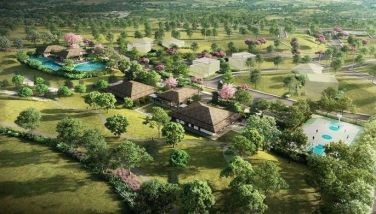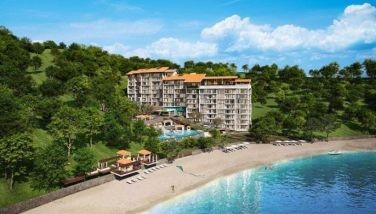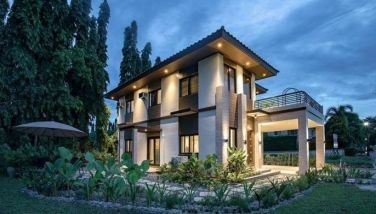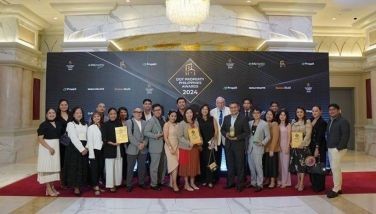Low-cost housing gets major boost
November 5, 2001 | 12:00am
MABALACAT, Pampanga – The country’s low-cost housing industry stands to benefit considerably from a technology using cement-bonded boards (CBB) made from paper mill solid wastes (sludge) as construction materials.
The sludge-derived CBB is a cheap but sturdy material, it was found in a study done by researchers of the University of the Philippines Los Baños College of Forestry and Natural Resources (UPLB-CFNR).
In fact, the board has been found to be fire-resistant in a subsequent research conducted by the Los Baños-based Department of Science and Technology-Forest Products Research and Development Institute (DOST-FPRDI).
The sludge CBB has also been found to have a noise-reduction attribute and is water-proof.
Further studies are being done to determine if it is termite-resistant.
The UPLB-CFNR researchers (Dr. Elvira C. Fernandez, leader; Clevan Reyve Lamason, Dr. Margaret Calderon, and Engr. Teodulfo Delgado, members) had earlier found that CBB with sludge as the main ingredient have comparable mechanical and physical properties compared with other CBBs already in the market.
A model house showcasing the viability of sludge CBB as a construction material now stands in the sprawling complex here of the Trust International Paper Corp. (TIPCO), the country’s major exporter of newsprint.
The project is a joint venture of TIPCO, UPLB-CFNR, UPLB Foundation, Inc., and DOST-Philippine Council for Industry and Energy Research and Development (PCIERD).
The model house was inaugurated recently by Sen. Ramon Magsaysay, Jr. and Science and Technology Secretary Estrella F. Alabastro.
The house’s interior and exterior walls, partitions, and ceilings were made from paper mill solid wastes.
The pilot house costs only P185,000, Dr. Fernandez told The STAR. If the CBBs are mass-produced, they will cost less, she added.
In the market feasibility study done, it was found that the project is feasible.
"The projected market demand for panel boards in the next 10 years far exceeds the projected supply, indicating the excellent market potential of sludge cement-bonded board," the researchers stressed. "The product can be priced competitively because of the low production costs," they added.
The technology has also solved one major problem: disposal of sludge, also known as fiber clay or the final solid waste or residue recovered after the treatment of paper mill effluent or wastewater.
It was learned that the company used to spend hundreds of thousands of pesos in disposing of the black sludge.
Now, officials of TIPCO averred, this once waste has been virtually converted into "sold", thanks to the technology on how to make it into a construction material.
The sludge-derived CBB is a cheap but sturdy material, it was found in a study done by researchers of the University of the Philippines Los Baños College of Forestry and Natural Resources (UPLB-CFNR).
In fact, the board has been found to be fire-resistant in a subsequent research conducted by the Los Baños-based Department of Science and Technology-Forest Products Research and Development Institute (DOST-FPRDI).
The sludge CBB has also been found to have a noise-reduction attribute and is water-proof.
Further studies are being done to determine if it is termite-resistant.
The UPLB-CFNR researchers (Dr. Elvira C. Fernandez, leader; Clevan Reyve Lamason, Dr. Margaret Calderon, and Engr. Teodulfo Delgado, members) had earlier found that CBB with sludge as the main ingredient have comparable mechanical and physical properties compared with other CBBs already in the market.
A model house showcasing the viability of sludge CBB as a construction material now stands in the sprawling complex here of the Trust International Paper Corp. (TIPCO), the country’s major exporter of newsprint.
The project is a joint venture of TIPCO, UPLB-CFNR, UPLB Foundation, Inc., and DOST-Philippine Council for Industry and Energy Research and Development (PCIERD).
The model house was inaugurated recently by Sen. Ramon Magsaysay, Jr. and Science and Technology Secretary Estrella F. Alabastro.
The house’s interior and exterior walls, partitions, and ceilings were made from paper mill solid wastes.
The pilot house costs only P185,000, Dr. Fernandez told The STAR. If the CBBs are mass-produced, they will cost less, she added.
In the market feasibility study done, it was found that the project is feasible.
"The projected market demand for panel boards in the next 10 years far exceeds the projected supply, indicating the excellent market potential of sludge cement-bonded board," the researchers stressed. "The product can be priced competitively because of the low production costs," they added.
The technology has also solved one major problem: disposal of sludge, also known as fiber clay or the final solid waste or residue recovered after the treatment of paper mill effluent or wastewater.
It was learned that the company used to spend hundreds of thousands of pesos in disposing of the black sludge.
Now, officials of TIPCO averred, this once waste has been virtually converted into "sold", thanks to the technology on how to make it into a construction material.
BrandSpace Articles
<
>
- Latest
Latest
Latest
October 23, 2024 - 9:30am
By May Dedicatoria | October 23, 2024 - 9:30am
October 11, 2024 - 3:45pm
October 11, 2024 - 3:45pm
October 10, 2024 - 11:30am
October 10, 2024 - 11:30am
October 5, 2024 - 12:08pm
October 5, 2024 - 12:08pm
September 24, 2024 - 1:00pm
September 24, 2024 - 1:00pm
September 13, 2024 - 4:00pm
September 13, 2024 - 4:00pm
Recommended






























